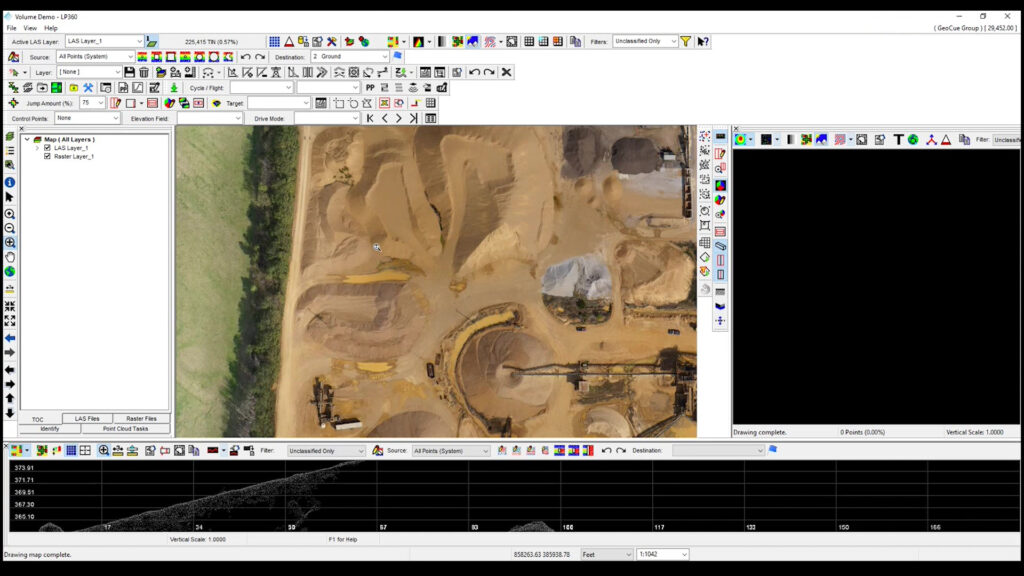WATCH THIS VIDEO TO SEE HOW TO PERFORM VOLUMETRIC ANALYSIS IN LP360
LP360 has one of the most comprehensive assortments of volumetric tools available for geospatial processing to perform volumetric analysis. Now users can easily define toes and clean volumetric data in a fraction of the time.
In the workflow video below, Chad Dillard, the LP360 Sales Manager, demonstrates a number of the tools available in LP360 to make easy work of your volumetric calculations.
Volumetric Analysis in LP360
Volumetric analysis within a point cloud setting is the process of using the point cloud to compute the volume of stockpiled material. LP360 contains an advanced set of volumetric analysis tools that allow for a variety of computational scenarios such as:
- Simple stockpile with base defined by a “toe”
- Simple stockpile with overhead features (that require removal from the computation)
- Stockpiles with a priori base level (for example, a surface is defined by a survey performed before the stockpiles were placed)
- Volumes with bases defined by geometric shapes
- Borrow pit analysis
- Change analysis over time such as cut and fill computations

This workflow video demonstrates how to use the toe extractor tool to easily outline stockpiles and remove points over the stockpile. You can also learn how to reshape stockpiles to meet the base, separate stockpile features with the split geometry tool, calculate volumes, and easily export volumes to Excel for further analysis and calculations.
For a typical 10-acre stockpile area of 50 or so piles, you can save 8 hours of production time as compared to manual definition methods by using the tools in LP360.
For example, a customer of GeoCue (a paper mill application) was using tools from another software provider to calculate toe definition and volumes. However, they were spending over 8 hours trying to model a single pile (excluding the point cloud processing time!) Even after this large investment of time, they were not getting accurate volumes.
After switching the volume part of the workflow to LP360, the time spent defining toes and computing volumes was reduced from 8 hours to less than one hour. In addition, after employing LP360 for cleanup and editing, their volumes met expectations. This company has now transitioned its entire plant (including feeder stock log piles) to drone-based volumetric.
If you’re ready to put LP360 to work for your business and greatly increase your efficiency in processing data, schedule a time to meet with one of our knowledgeable representatives today.